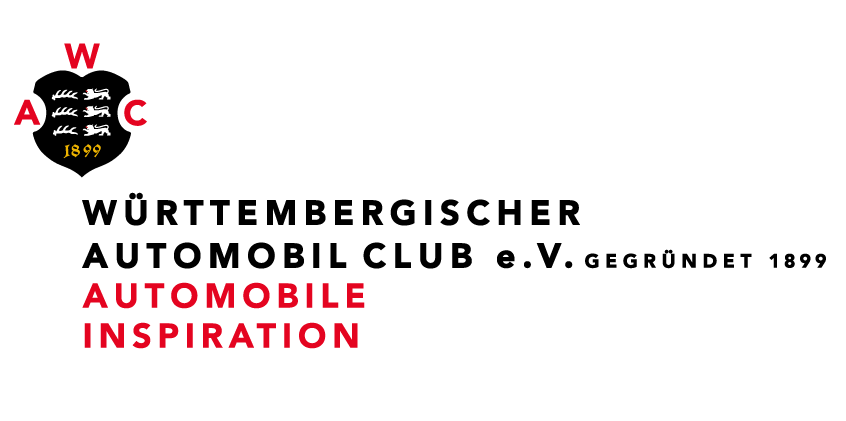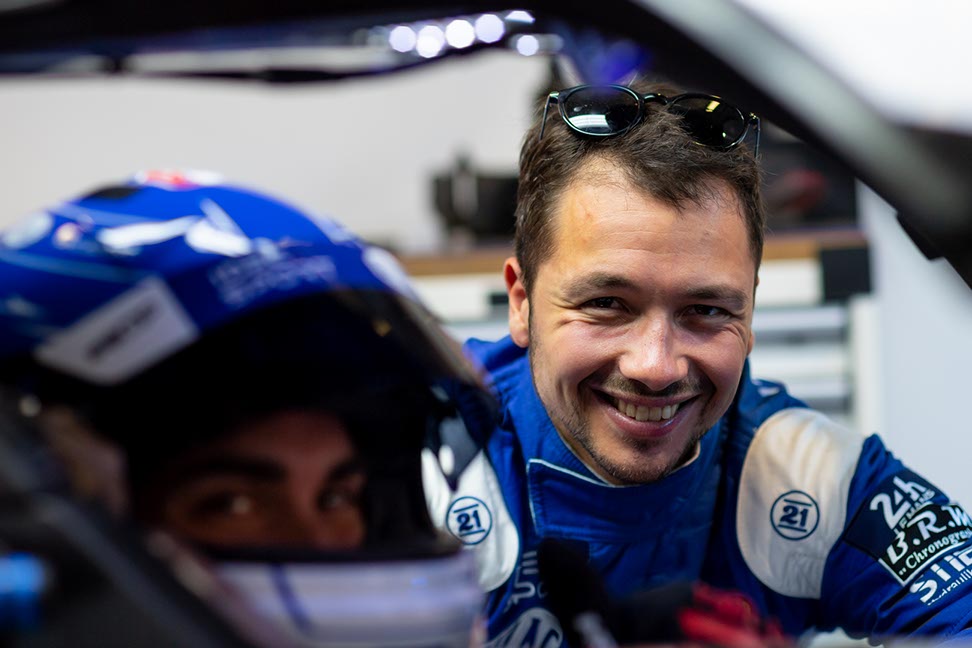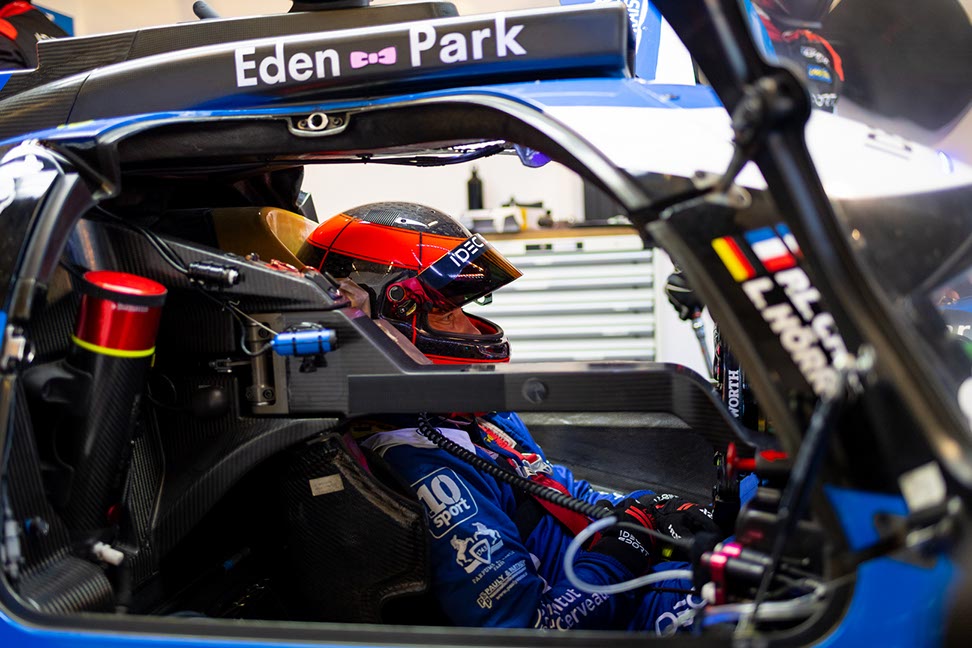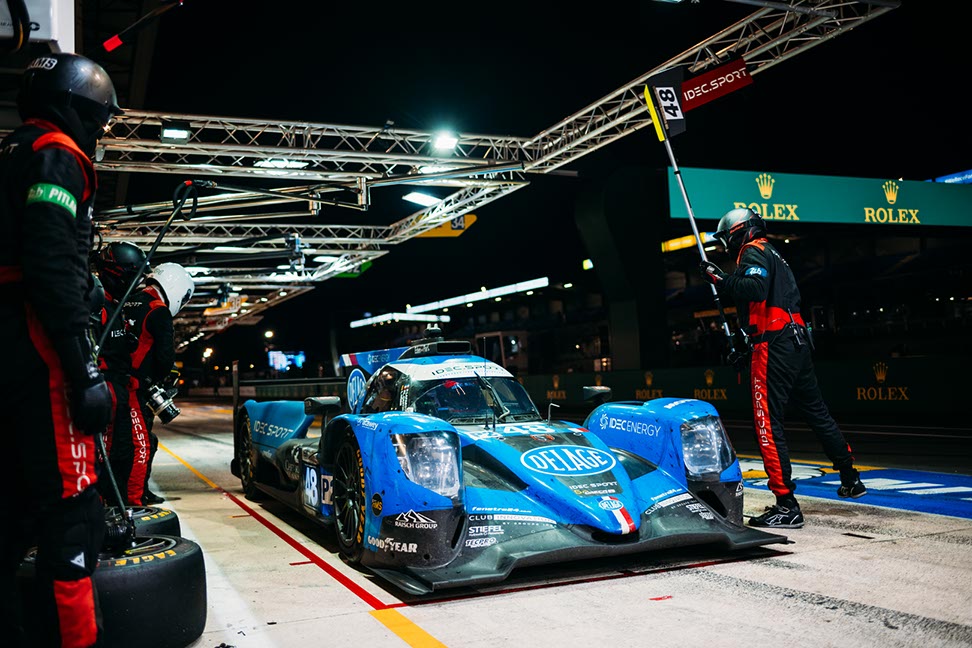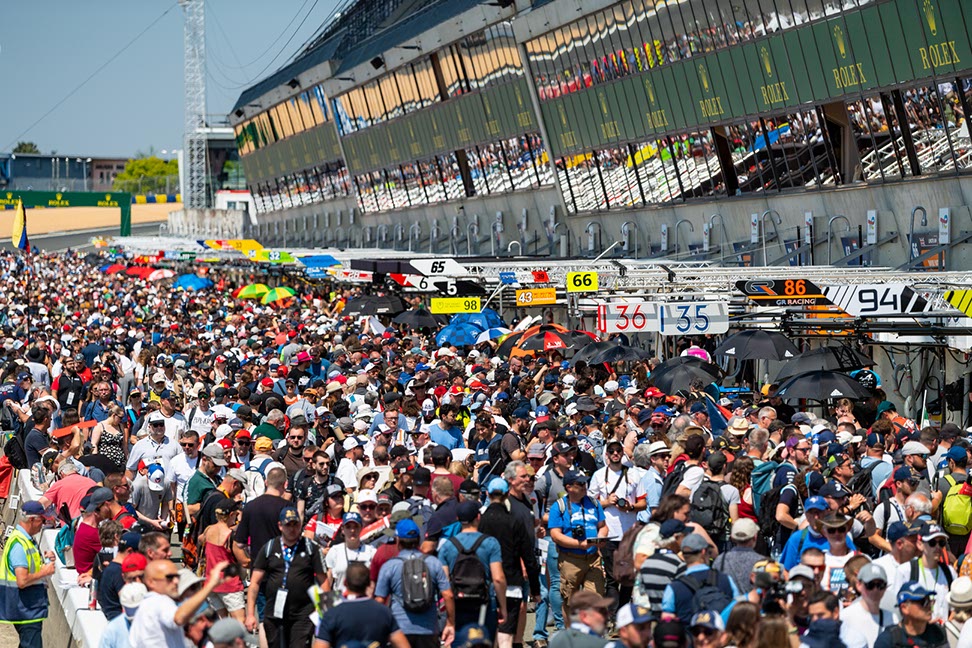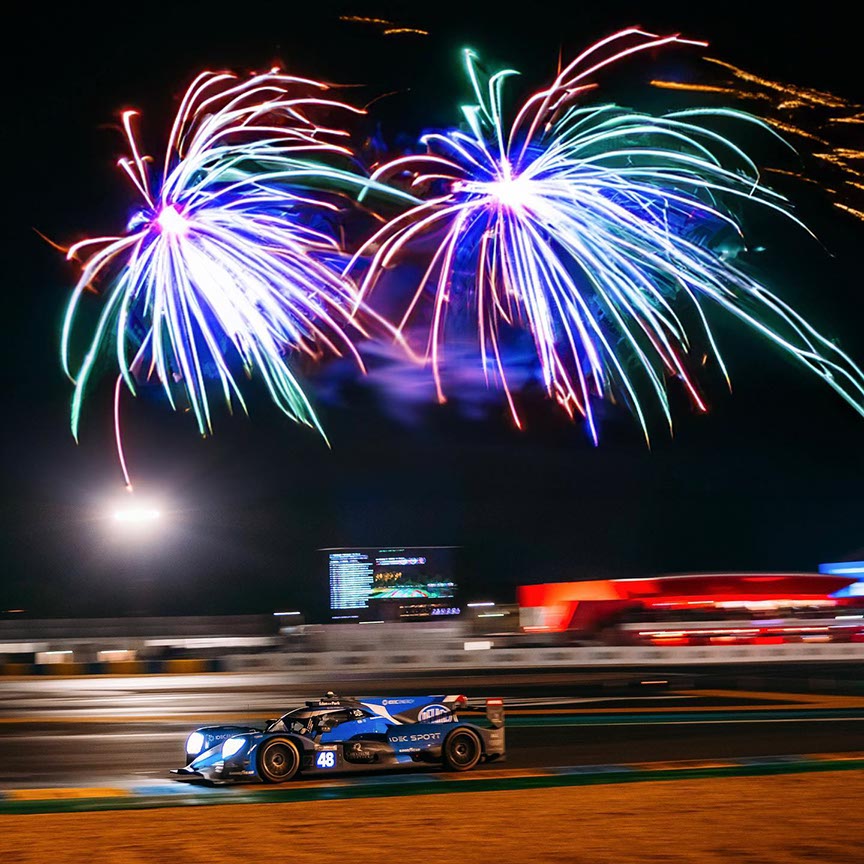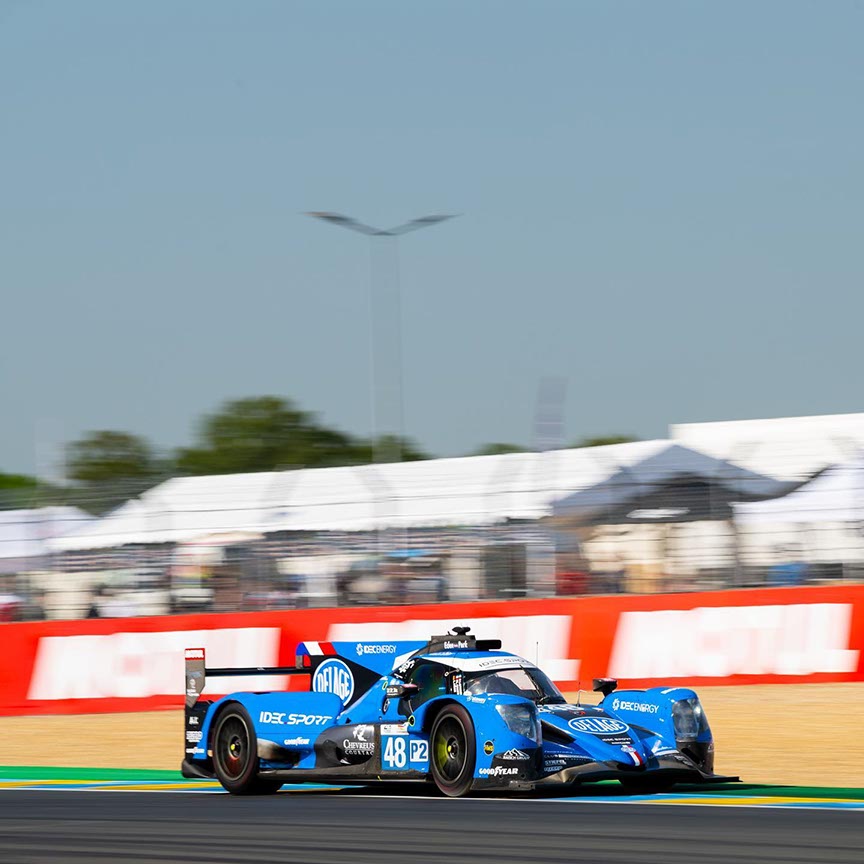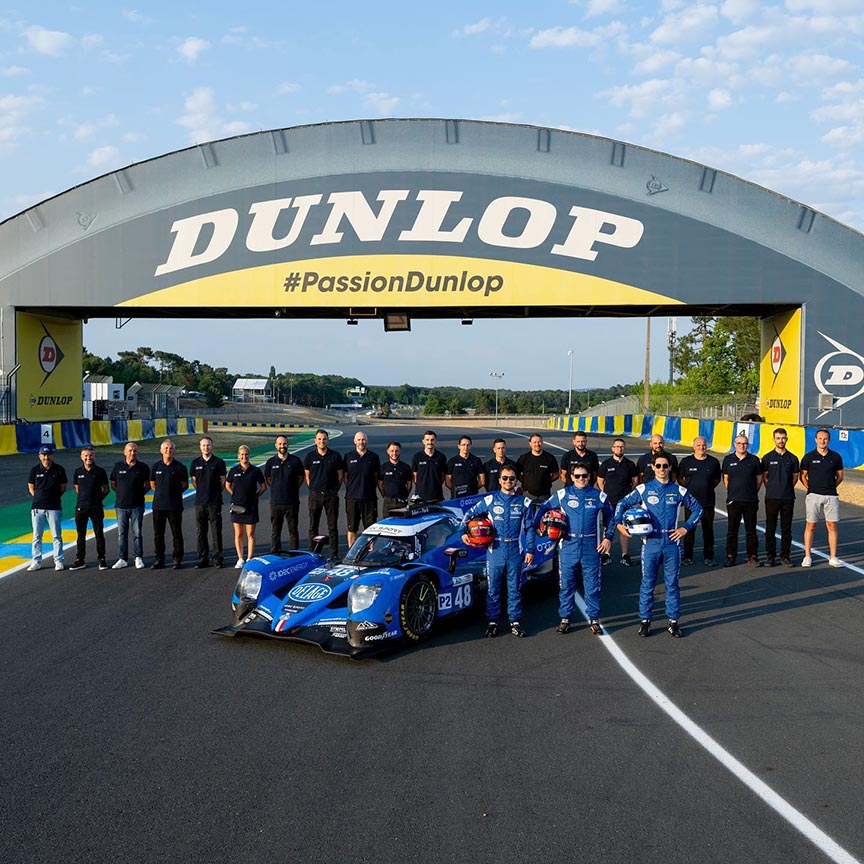MOTORSPORT
Review:
WAC Motor Club with
Laurents Hörr
Photos: modus-vm.de
„In the city, all hell broke loose.“ Racer Laurents Hörr reports on his participation in the 24 Hours of Le Mans race.
In front of over 50 guests, moderator Jürgen Preuss opened the WAC evening with interesting remarks about the racing myth of Le Mans and its history. Originally, the mostly production-based cars participated in the 24 Hours of Le Mans race to prove their durability. But that quickly changed: On the now paved roads, it later became about maximum speed, reaching top speeds of up to 400 km/h. Jürgen quoted Formula 1 designer Gordon Murray on this matter: „A victory in Le Mans is more difficult than a Formula 1 championship. It’s a season-long race that is driven without a break.“
This year’s 24-hour marathon in Sarthe celebrated a magnificent 100th anniversary. 62 race cars from three racing classes, featuring prestigious brands such as Alpine, Aston Martin, Cadillac, Chevrolet, Ferrari, Peugeot, Porsche, and Toyota, were at the starting line. Around 350,000 on-site spectators and 18 million viewers on TV witnessed the thrilling racing classic.
The unexpected victory of Ferrari over the Le Mans veteran Toyota made the sensation complete. And right in the midst of it all was Laurents Hörr from Gerlingen, tonight’s guest at WAC. His team in the „small“ LMP2 prototype class finished ahead of some of the newly introduced Hypercars in the overall 15th position. Within the LMP2 class, which had 24 starters, Laurents and his French driver colleagues secured sixth place.
Before his report on the initial rain-soaked battle with many retirements, the 26-year-old native of Gerlingen outlines his journey to becoming a professional race car driver. Laurents has been involved in motorsport since the age of six and made his first start in a children’s kart at the age of eleven. After successful years in karting, he made the transition to the international single-seater league of Formula Renault 1.6 in 2014. During the 2016 season, Laurents competed in the lightning-fast Formula Renault 2.0 (210 hp, 500 kg). A year later, he secured the runner-up title in the V de V Sport Series, which is held throughout Europe.
Then came the switch to (formally) two-seater roofed racing cars. The LMP3 entry-level class sports prototypes deliver 440 hp and weigh 900 kilograms. „Depending on the racetrack, the GT3 coupes from Ferrari or Porsche in the DTM are four to five seconds slower per lap,“ Laurents commented on the transition. Since 2018, the Gerlingen native has been participating in the Michelin Le Mans Cup, which he already clinched the championship title in 2019. In the following year, Laurents and his team, DKR Engineering from Luxembourg, secured the title once again, a feat that „no one has accomplished so far.“ Last year, as a prelude to the 24 Hours of Le Mans, he made the jump to the demanding LMP2 category (450-600 hp, 950 kg). The DKR team, with Laurents driving for a total of around ten hours, achieved a sensational 3rd place in the LMP2 class in 2022. (You can find all of Laurents Hörr’s previous race entries and achievements on the Wikipedia website: Laurents Hörr
Photos: Delage
But now, let’s talk about Le Mans 2023. Laurents has since changed teams and now races for IDEC Sport in a beautiful blue Oreca-Gibson 07, with the French luxury and heritage brand Delage as the main sponsor. Their comeback with a road-worthy Formula 1 two-seater is currently underway. Action-packed film clips enhance Laurents‘ narrations of the racing event in Le Mans, which begins on Tuesday before the race weekend. Qualifying and Free Practice alternate. On Thursday, after the Hyperpole session, the fastest cars from all three racing classes line up side by side at the start/finish line: a red Ferrari, a yellow Corvette, and the blue „Delage,“ which Laurents and his driver teammates Paul-Loup Chatin and Paul Lafargue aim to successfully bring to the finish line. A tremendous responsibility rests on the young man from Gerlingen.
Before that, there’s some relaxation at the driver parade on Friday, right in Le Mans, with vintage cars, marching bands, and lovely parade girls: „The city was buzzing with excitement. Around 15,000 spectators came out to celebrate along the streets,“ Laurents reports. „We handed out hundreds of team caps and signed autographs non-stop.“ Everywhere imaginable and unimaginable, as captured in the film. The same enthusiasm is evident on Saturday afternoon at the racetrack before the start. Jet fighters flying low paint the French national colors in the nearly cloudless sky, the teams line up next to their cars on the main straight, and military helicopters fly over the scene.
However, chaos ensues for everyone after the 4 pm start. Due to heavy rain in certain sections of the 13.6-kilometer-long track, many of the slick-tired race cars slid into gravel beds or barriers. „The visibility there was close to zero; we probably drove behind the pace car at 80 km/h for about an hour,“ Laurents recounts. „And the crazy thing was that the start/finish area was always dry.“ But the blue Oreca-Delage performs well through the night and confidently holds fourth place in its class in the afternoon.
The car’s technology „didn’t give any trouble; it was still fast, and we wanted to finish the race.“ Then, two hours before the end of the race, a scheduled tire change takes place. However, after just one lap, Laurents returns to the pit lane with the rear left tire riding on the rim. Tire damage, a material defect. „That was simply devastating for me,“ Laurents admits, „you could understand a driving mistake or an accident.“ But when a new tire disintegrates, it’s incomprehensible. As a result, the IDEC Sport Le Mans team slips to sixth place, still a very commendable performance.
During the subsequent panel discussion, the approximately 30 motorsport enthusiasts present at the WAC focus on questions about the technology of the LMP2 cars, the course of the race, and sponsorship. The race prototypes feature adjustable traction control and power steering. They use Goodyear spec tires and biofuel from Total, derived from byproducts of wine cultivation: „Sometimes it smells strongly of grappa in the pit lane.“
However, the drivers should stay sober. During the race with 62 cars on the track, a Le Mans driver must be able to distinguish between each model directly in front of them and those in their rearview mirror. Otherwise, in heavy traffic, they might inadvertently let a competitor from their own class pass by. During the day, Laurents relies on the appearance and color of the cars, but at night, it becomes challenging: „Everyone drives with their high beams on, and it’s hard to tell whether someone is 100 or 300 meters behind me. The cars are hardly recognizable, so the team informs me when one or more of the faster Hypercars are behind me.“
But, without sponsorship, nothing would be possible for the LMP2 and LMP3 prototypes. In 2023, you can witness Laurents live at the European Le Mans Series and he also participates in the Prototype Cup Germany. Those who wish to be sponsors of Laurents can utilize this likable young athlete for the image transfer of their company. They also benefit from Laurents‘ reach in regional media, special interest media, and social media. Moreover, they offer their customers and partners unforgettable experiences at the racetrack, up close in the pit lane, the paddock, and during the starting grid. The goal is clearly defined as well: Laurents competes in the Hypercar class and wins the 24 Hours of Le Mans race.
A lap with Laurents Hörr at the Circuit de Spa-Francorchamps
Photos: Copyright MPSA WEC LeMans 2022
